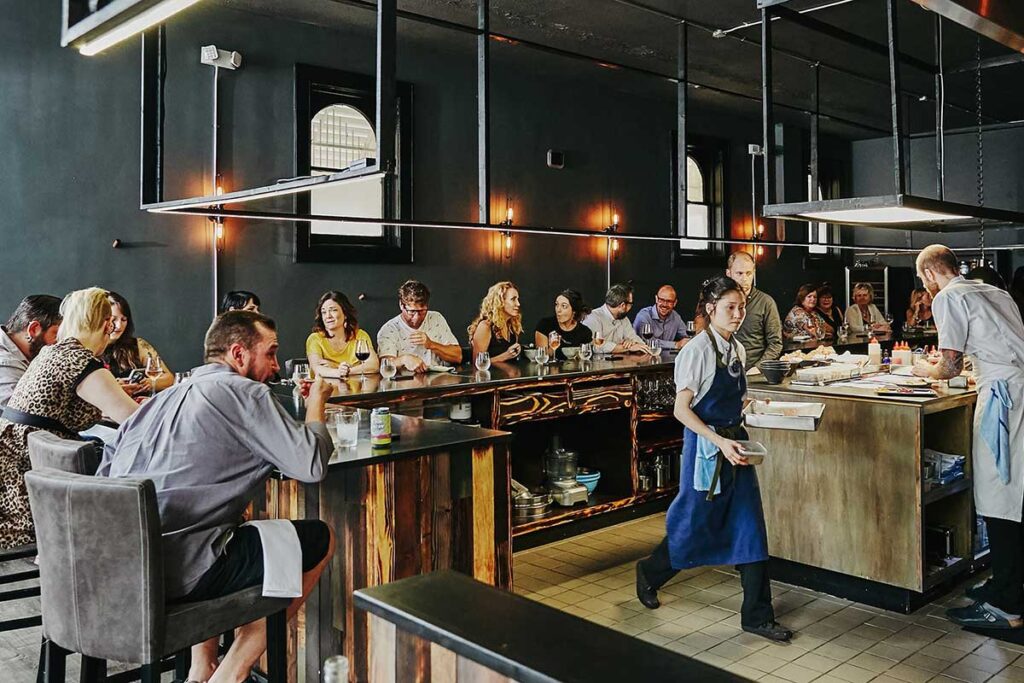Faced with immense challenges over the past two years, the hotel, restaurant and institutional (HRI) sectors had to pivot in a major way. From the popularity of outdoor dining to the convenience of pick-up and door-step deliveries, eateries and dining establishments had to make quick business decisions for commercial survival.
The pandemic, no doubt, has accelerated many trends, one of which is the rise of private dining, either out of necessity, or personal preference. Rather than sitting in a boring room or space with a dining table, chairs and credenza, some of these spaces evolved into restaurants-within-restaurants, fitted with specially added amenities to elevate the guest experience and make dining out safely even more exciting!
With so much of their businesses dependent on face-to-face contact, many of the food and dining establishments are already rethinking design space to increase customer appeal and claw back business. How? By using the practical and aesthetic power of design to re-engage customers.
Here are some of the design themes that are going to change the face of dining in 2022:
A sense of place and time. Interior designs that are influenced by local culture give restaurant diners a familiar and comforting sense of place and belonging. After two years of separation, people are eager to start socialising again. Including elements that are native to a specific culture or the past can evoke feelings of nostalgia. Research shows that consumers who feel more nostalgic at traditional restaurants tend to perceive higher value of their dining experience, which in turn, leads to higher loyalty intentions.
Experiential dining. It takes more than good food and service to tempt customers. Diners are well informed and sophisticated. What they’re looking for is a multi-sensory experience, from table settings and atmosphere, to sophisticated lighting, sound, entertainment and everything in between!
Biophilic design. This concept brings nature into urban settings such as the use of natural light, and greenery to create welcoming environments. While there are fake and preserved plants available now that are really beautiful and difficult to differentiate from the real ones, Griz Dwight of Grizform Design Architects, says that if positioned strategically, especially in restaurants, they can provide visual impact and the feeling of connecting with nature. Beyond plants, maximizing views to the outside, indoor-outdoor dining options, natural materials like wood and stone, and nature-inspired wall coverings are particularly effective.
Flexible seating. When it comes to interior layouts, flexibility is the name of the game. Flexible interior layouts have become essential in restaurants. Being able to move tables, chairs and wait stations around, allows for the accommodation of large and small parties, as well as private dining sections.
Eye on sustainability. As diners strive to eat with a conscience, restaurants find themselves having to bear the responsibility of practising sustainability. To minimize their impact on the planet, restaurants can be more careful in their sourcing and more responsible in how they operate their businesses. For example, they can purchase better-quality, energy-efficient equipment, invest in bio-degradable and/or returnable packaging, work with suppliers to shorten their supply chain, reduce food wastage, and more.

Salted & Hung’s sustainability concept is all about minimal food wastage through upcycling and transforming parts such as skin, bones, proteins and innards into garnishes, broths and condiments. (The Potluck)
Since the pandemic, takeaway options have become an integral part of the food and beverage ecosystem. Southeast Asia’s online food delivery spend is expected to grow over two times faster than the total food service spend over the next five years, to reach USD28 billion in 2025. Restaurant designers should consider building collection points for food pick-up away from diners so that they can enjoy their food without interruption.
Open Concept Kitchen. Open kitchens are a great way to attract diners, not only for the curiosity of trying the food but also to observe the cooking process. The concept not only allows for interaction and emotional connection between the chef and diners, it enhances the dining and culinary experience.

Open kitchens allow for interaction and emotional connection between the chef and diners. (Photo: Bon Appetit)







